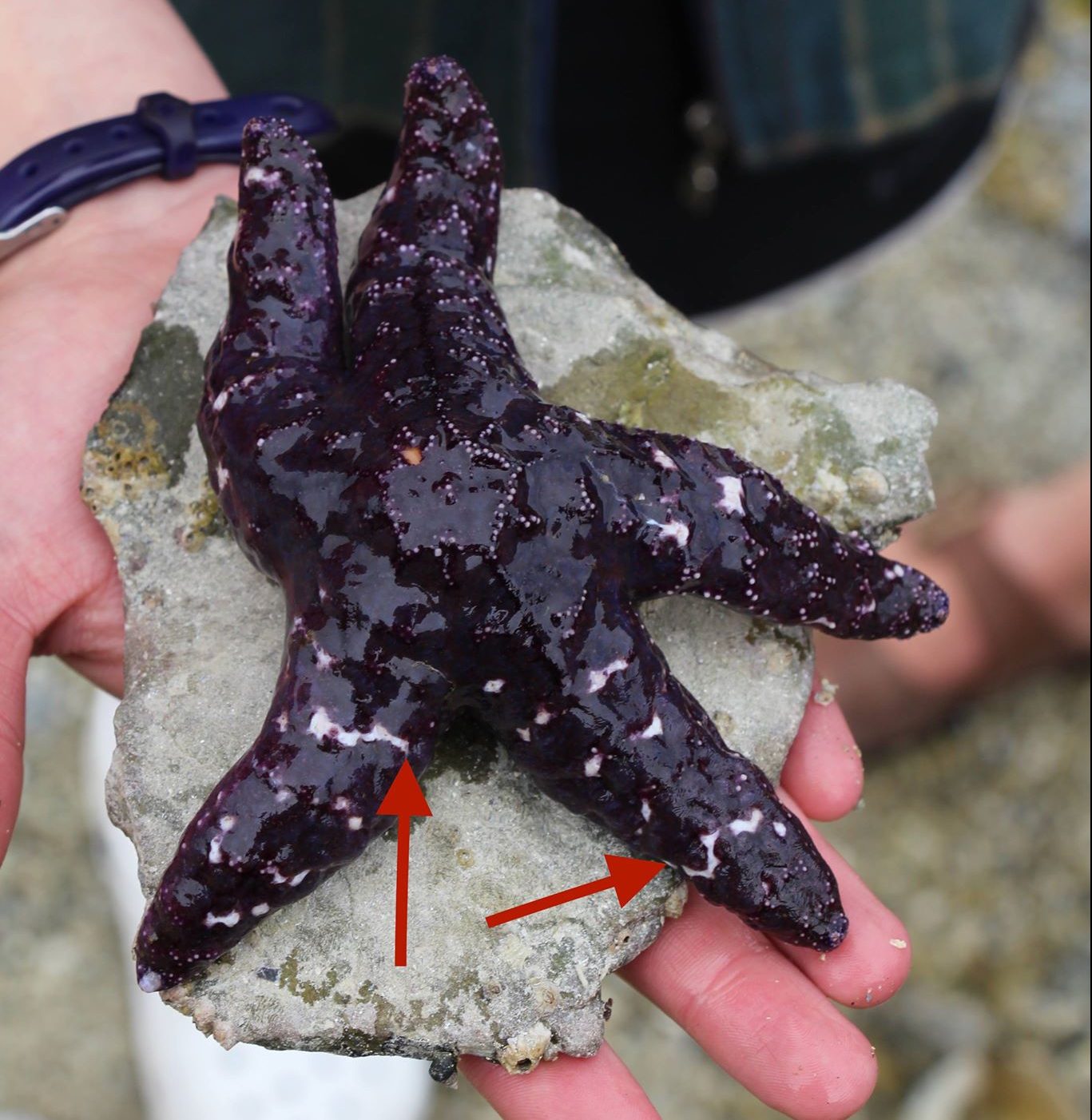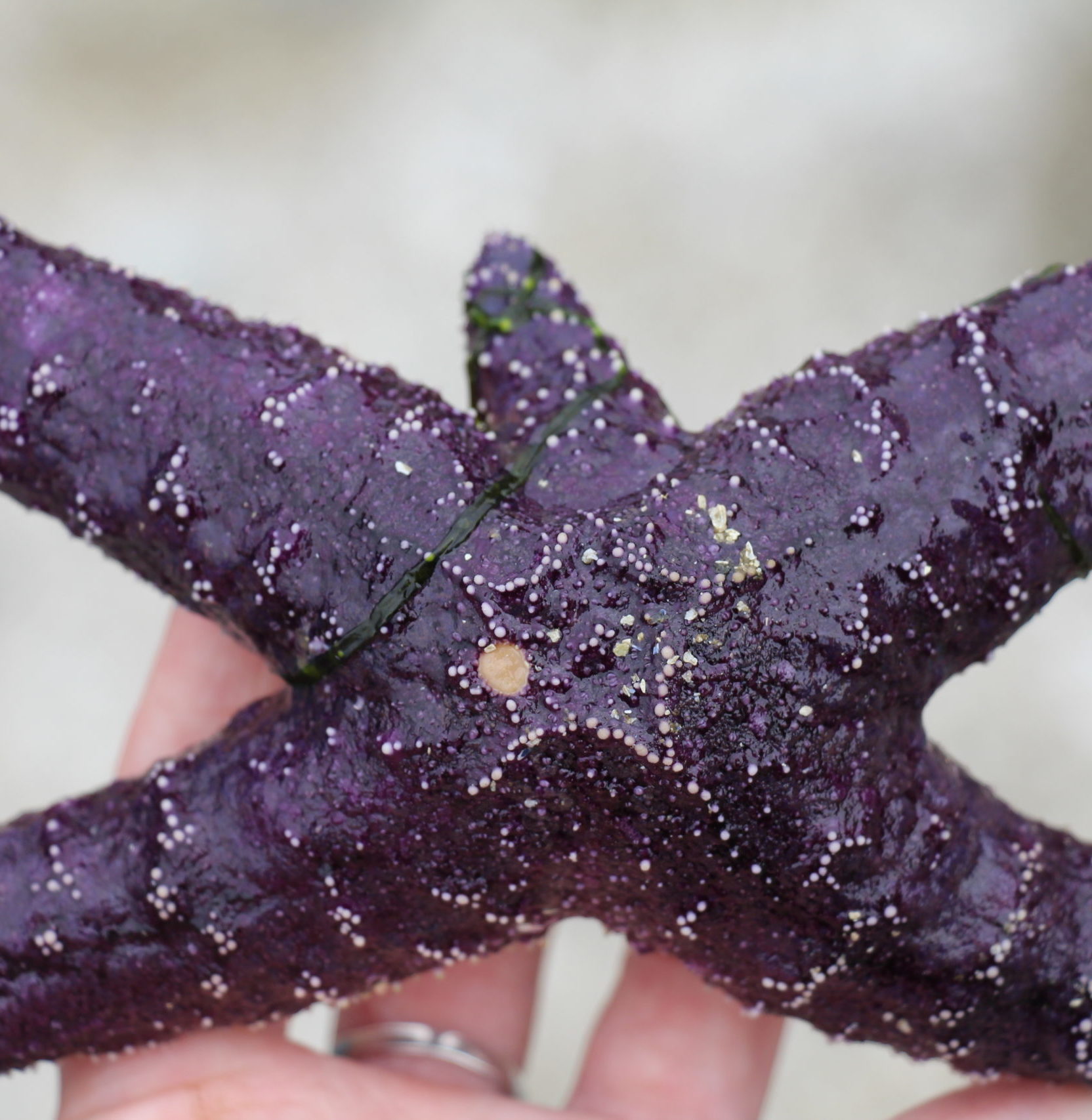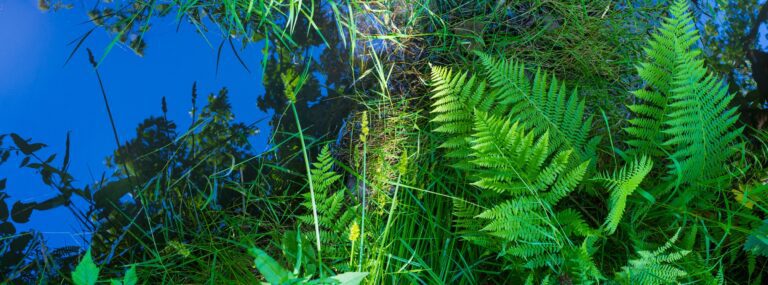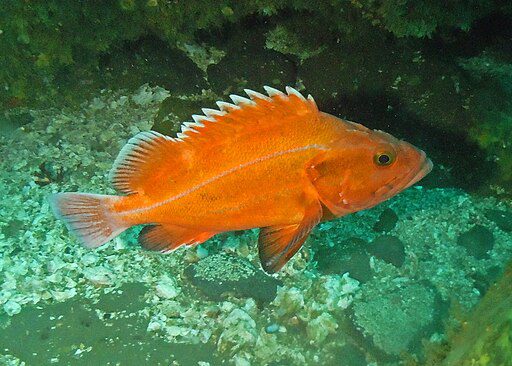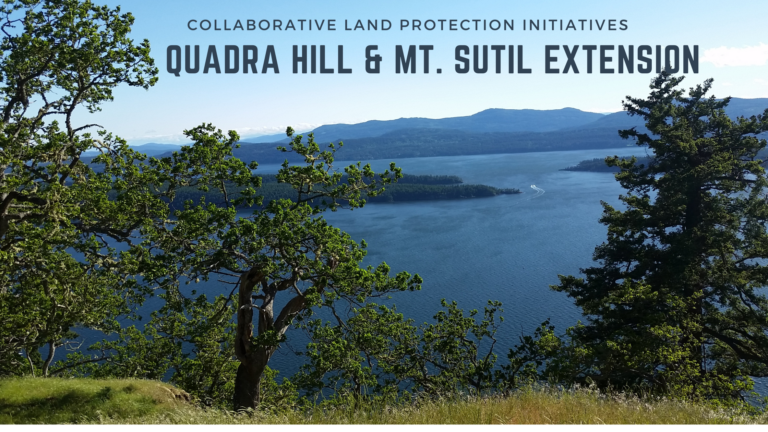Last Monday, Fireside Adventures / SOS Children’s Village joined us for our Marine Investigations program.
We were also joined by Indigenous interpreter Levi Wilson, who gave us insight into the ancient habitation of Montague Harbour or Sum’nuw, the harbour’s Hul’qumi’num name. Sum’nuw’ meaning “a hidden place” in Hul’qumi’num, is shared by many nations – like much of the Southern Gulf Islands. Current anthropological research suggests the harbour has been inhabited for over 3,000 years, however there is evidence of people living in Sum’nuw’ for even longer.
For our territory acknowledgement and to learn more about our shared territory, watch this video. Acknowledging Our Shared Territory
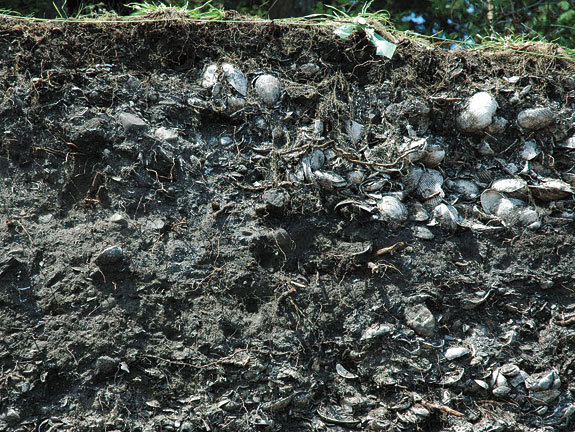
Exposed shell middens show years and years of habitation! Photo by: Tim Steury, Washington State University
Levi also brought a feather carved out of cedar wood, which was used as a talking feather, giving the children space to introduce themselves. He used the feather and his skillfully-woven cedar bark hat to illustrate the importance of cultural practice in modern times as well as to address how we in western society talk about cultural practice. As an educator concerned with the representation of local Indigenous knowledge and customs, this message struck home to me. Levi explained how we have adopted in our language past-tense verbs to associate with cultural practice. For example, one might say “Hats were woven from cedar bark.” However, this statement is erroneous in nature as many of these cultural practices are still used today. Adopting present-tense verbs when speaking about cultural practices not only validates their current practice, but also serves as a powerful reminder that they are far from a “relic of the past”.
We then went exploring in the intertidal zone. We found so many cool creatures including: tidepool sculpins, sea stars, polychete worms, flat worms, a spaghetti worm, clams, crabs (including a big red rock crab) and so much more. The kids loved learning about all the various sea creatures, and we continued the learning by doing a teaching train on the dock—an activity where students teach other what they’ve learned. The public on the dock also learnt about sea stars and sea urchins. We also found a beautiful kelp crab to show off to everyone.

Red Rock Crab. Photo: Kirt L. Onthank
Sadly, we also found a colony of sea star infected with sea star wasting syndrome. There is no conclusive evidence for what causes sea star wasting syndrome, however scientists believe it is caused by a combination of factors including a viral infection by Sea-Star associated Denso-Virus. The syndrome appears as lesions on sea stars that lead to tissue decay, causing the sea star’s limbs to fall off. It is also believed that warming waters due to climate change are increasing the occurrence of sea star wasting syndrome.
If you find a sea star with sea star wasting syndrome, do not touch it—the sea star is already stressed, and it’s best not to stress it further. There are several academic and scientific organizations, such as UC Santa Cruz, who can use citizen scientists like you to track sea star wasting syndrome! You can submit your observations here!
Healthy sea stars, as seen in the photo below, can actually regrow their limbs, although it is a rather slow process.
It was a great day, with both the kids and the public leaving inspired to learn more about the marine environment.
